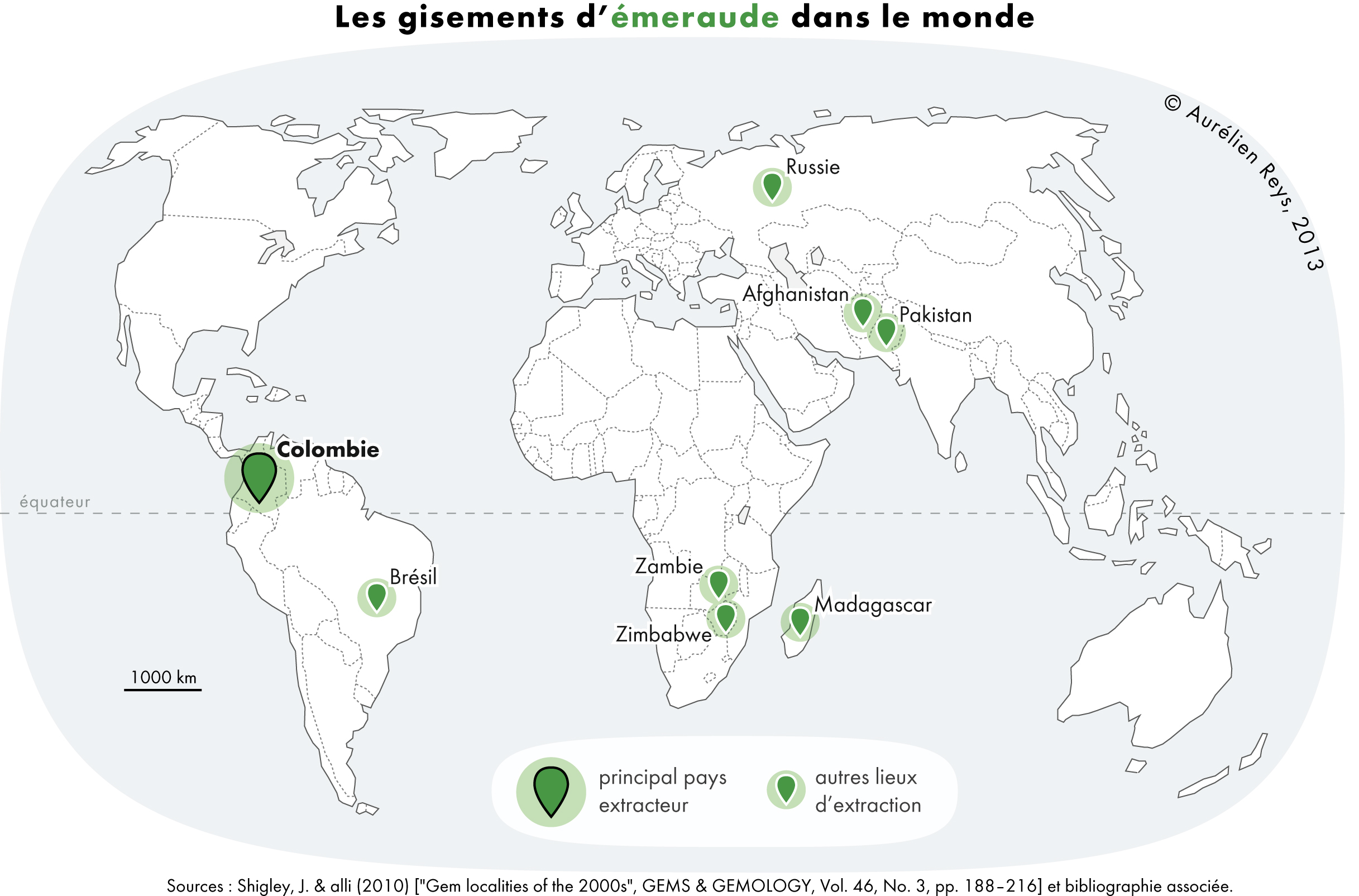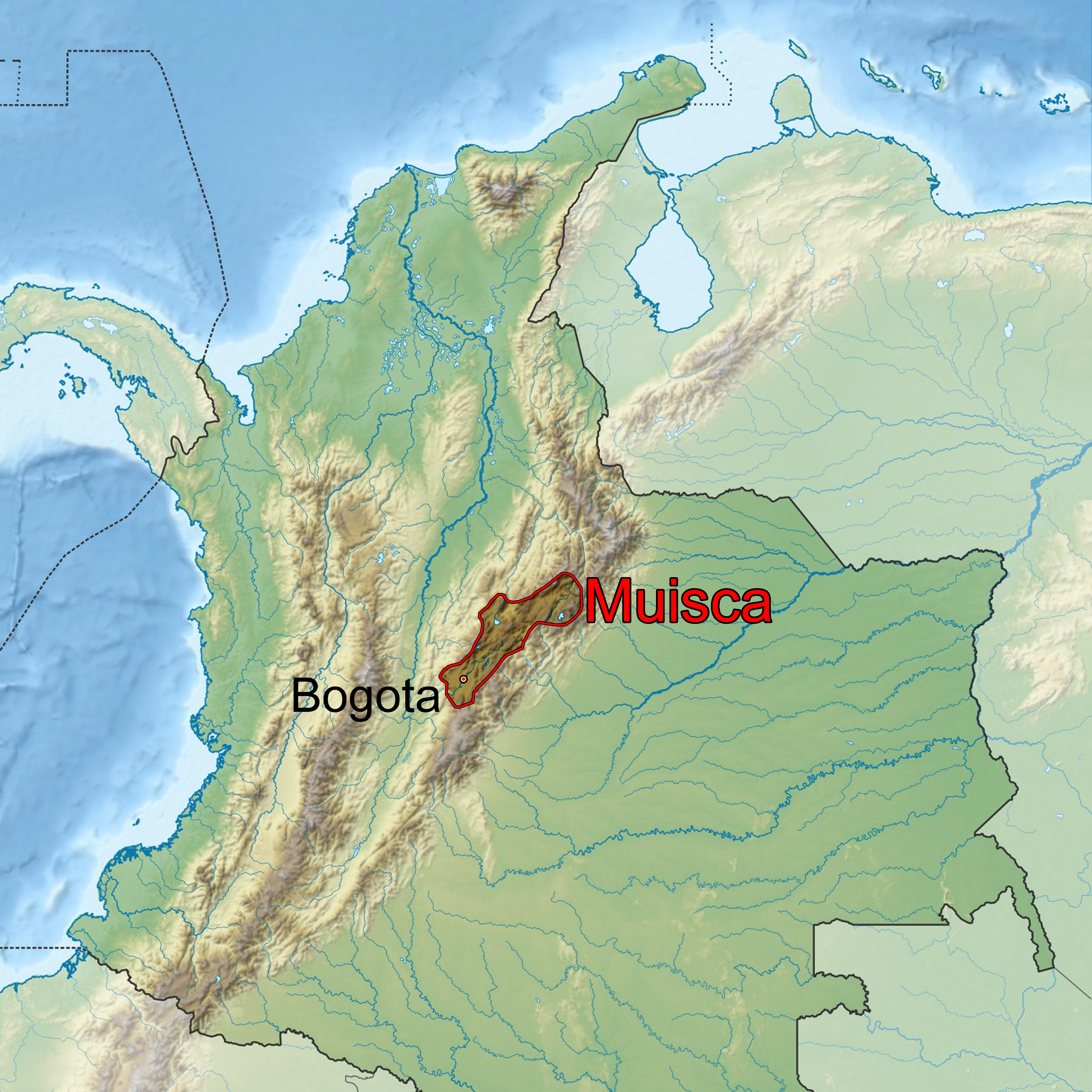|
Gachalá Emerald
The Gachalá Emerald, one of the most valuable and famous emeralds in the world, was found in 1967, in the mine called Vega de San Juan, located in Gachala, a town in Colombia, located from Bogota. Gachalá Muisca people#Language, Chibcha means "place of Gacha." Presently the emerald is in the United States, where it was donated to the Smithsonian Institution by the New York City jeweler, Harry Winston. Symbolism The emerald was named in honor of Gachalá, the municipality of Cundinamarca where it was found. Ficha técnica de la Esmeralda Gachalá de la página web oficial del Smithsonian Institution of Washington, (Consulted on 06-19-2011) Characteristics * Shape: Emerald * Color: Intense green * Carats: 858 Carat (mass), Carats * Weight: * Size: * Year of extraction: 1967 Conservation The emerald is part of the permanent collection of the Smithsonian Institution in Washington, D.C. It was donated in 1969 by the American jeweler Harry Winston, and is labeled under nu ... [...More Info...] [...Related Items...] OR: [Wikipedia] [Google] [Baidu] |
Colombian Emeralds
Emeralds are green and sometime green with a blueish-tint precious gemstones that are mined in various geological settings. They are minerals in the beryl group of silicates. For more than 4,000 years, emeralds have been among the most valuable of all jewels. Colombia, located in northern South America, is the country that mines and produces the most emeralds for the global market, as well as the most desirable. It is estimated that Colombia accounts for 70–90% of the world's emerald market. While commercial grade emeralds are quite plentiful, fine and extra fine quality emeralds are extremely rare. Colombian emeralds over 50 carat (mass), carat can cost much more than diamonds of the same size. The Colombian Departments of Colombia, departments of Boyacá Department, Boyacá and Cundinamarca Department, Cundinamarca, both in the Cordillera Oriental (Colombia), Eastern Ranges of the Colombian Andes, are the locations where most of the emerald mining takes place. Although the Co ... [...More Info...] [...Related Items...] OR: [Wikipedia] [Google] [Baidu] |
United States
The United States of America (USA), also known as the United States (U.S.) or America, is a country primarily located in North America. It is a federal republic of 50 U.S. state, states and a federal capital district, Washington, D.C. The 48 contiguous states border Canada to the north and Mexico to the south, with the semi-exclave of Alaska in the northwest and the archipelago of Hawaii in the Pacific Ocean. The United States asserts sovereignty over five Territories of the United States, major island territories and United States Minor Outlying Islands, various uninhabited islands in Oceania and the Caribbean. It is a megadiverse country, with the world's List of countries and dependencies by area, third-largest land area and List of countries and dependencies by population, third-largest population, exceeding 340 million. Its three Metropolitan statistical areas by population, largest metropolitan areas are New York metropolitan area, New York, Greater Los Angeles, Los Angel ... [...More Info...] [...Related Items...] OR: [Wikipedia] [Google] [Baidu] |
Jewelry In The Smithsonian Institution
Jewellery (or jewelry in American English) consists of decorative items worn for personal adornment such as brooches, rings, necklaces, earrings, pendants, bracelets, and cufflinks. Jewellery may be attached to the body or the clothes. From a western perspective, the term is restricted to durable ornaments, excluding flowers for example. For many centuries metal such as gold often combined with gemstones, has been the normal material for jewellery, but other materials such as glass, shells and other plant materials may be used. Jewellery is one of the oldest types of archaeological artefact – with 100,000-year-old beads made from ''Nassarius'' shells thought to be the oldest known jewellery. The basic forms of jewellery vary between cultures but are often extremely long-lived; in European cultures the most common forms of jewellery listed above have persisted since ancient times, while other forms such as adornments for the nose or ankle, important in other cultures, are muc ... [...More Info...] [...Related Items...] OR: [Wikipedia] [Google] [Baidu] |
Natural History Of Colombia
Nature is an inherent character or constitution, particularly of the ecosphere or the universe as a whole. In this general sense nature refers to the laws, elements and phenomena of the physical world, including life. Although humans are part of nature, human activity or humans as a whole are often described as at times at odds, or outright separate and even superior to nature. During the advent of modern scientific method in the last several centuries, nature became the passive reality, organized and moved by divine laws. With the Industrial Revolution, nature increasingly became seen as the part of reality deprived from intentional intervention: it was hence considered as sacred by some traditions (Rousseau, American transcendentalism) or a mere decorum for divine providence or human history (Hegel, Marx). However, a vitalist vision of nature, closer to the pre-Socratic one, got reborn at the same time, especially after Charles Darwin. Within the various uses of the word t ... [...More Info...] [...Related Items...] OR: [Wikipedia] [Google] [Baidu] |
List Of Emeralds By Size
This is a list of emeralds by size. Emeralds Emerald is a gemstone and a variety of the mineral beryl (Be3Al2(SiO3)6) colored green by trace amounts of chromium and sometimes vanadium. Beryl has a hardness of 7.5–8 on the Mohs scale. Most emeralds are highly included, so their toughness (resistance to breakage) is classified as generally poor. Emerald is a cyclosilicate. Emeralds in antiquity were mined in Egypt at locations on Mount Smaragdus since 1500 BCE, and India, and Austria since at least the 14th century CE. The Egyptian mines were exploited on an industrial scale by the Roman and Byzantine Empires, and later by Islamic conquerors. Mining ceased with the discovery of the Colombian deposits; only ruins remain. Colombia is historically an important producer of emeralds, constituting 50–95% of the world production, with the number depending on the year, source and grade. Emerald production in Colombia has increased drastically in the last decade, increasing by 78% fr ... [...More Info...] [...Related Items...] OR: [Wikipedia] [Google] [Baidu] |
List Of Individual Gemstones
A number of individual gemstones are famous in their own right, either because of their size and beauty or because of the people who owned or wore them. Aquamarines * Dom Pedro, the world's largest cut and polished aquamarine. It is currently housed in the Janet Annenberg Hooker Hall of Geology of the National Museum of Natural History in Washington, D.C. Diamonds :''See List of diamonds'' Emeralds * Bahia Emerald * Carolina Emperor, 310 carats uncut, 64.8 carats cut; discovered in the United States in 2009, resides in the North Carolina Museum of Natural Sciences, Raleigh, NC, US * Chalk Emerald * Duke of Devonshire Emerald * Emerald of Saint Louis, 51.60 carats cut; discovered in Austria, probably Habachtal, resides in the National Museum of Natural History, Paris * Gachalá Emerald * Mogul Mughal Emerald, 217.80 carats cut; mined in Colombia and cut in the Mughal empire in Hijri year 1107 (1695–1696), resides in the Museum of Islamic Art, Doha, Qatar * Patricia Em ... [...More Info...] [...Related Items...] OR: [Wikipedia] [Google] [Baidu] |
Chivor
Chivor is a town and municipality in the Eastern Boyacá Province, part of the Colombian Departments of Colombia, department of Boyacá Department, Boyacá. The mean temperature of the village in the Tenza Valley is and Chivor is located at from the department capital Tunja. Economic activity includes emerald mining. Borders Bordered to the north with the municipality of Macanal; to the south with Ubalá, Cundinamarca Department, Cundinamarca, on the east with the municipality of Santa María, Boyacá, Santa María, and the west by the municipality of Almeida, Boyacá, Almeida. Etymology Chivor comes from Chibcha language, Chibcha and means "Our farmfields - our mother" or "Green and rich land". The latter refers to the rich emerald deposits.Etymology Chivor - Excelsio.net History ...[...More Info...] [...Related Items...] OR: [Wikipedia] [Google] [Baidu] |
Carat (mass)
The carat (ct) is a unit of mass equal to , which is used for measuring gemstones and pearls. The current definition, sometimes known as the metric carat, was adopted in 1907 at the Fourth General Conference on Weights and Measures, and soon afterwards in many countries around the world. The carat is divisible into 100 ''points'' of 2 mg. Other subdivisions, and slightly different mass values, have been used in the past in different locations. In terms of diamonds, a paragon is a flawless stone of at least 100 carats (20 g). The ANSI X.12 EDI standard abbreviation for the carat is CD. Etymology First attested in English in the mid-15th century, the word ''carat'' comes from Italian ''carato'', which comes from Arabic (''qīrāṭ''; قيراط), in turn borrowed from Greek ''kerátion'' κεράτιον ' carob seed', a diminutive of ''keras'' 'horn'. It was a unit of weight, equal to 1/1728 (1/12) of a pound (see Mina (unit)). History Carob seeds have bee ... [...More Info...] [...Related Items...] OR: [Wikipedia] [Google] [Baidu] |
Emerald
Emerald is a gemstone and a variety of the mineral beryl (Be3Al2(SiO3)6) colored green by trace amounts of chromium or sometimes vanadium.Hurlbut, Cornelius S. Jr., and Kammerling, Robert C. (1991). ''Gemology'', John Wiley & Sons, New York, p. 203, . Beryl has a hardness of 7.5–8 on the Mohs scale. Most emeralds have many inclusions, so their toughness (resistance to breakage) is classified as generally poor. Emerald is a cyclosilicate. Etymology The word "emerald" is derived (via and ), from Vulgar Latin: ''esmaralda/esmaraldus'', a variant of Latin ''smaragdus'', which was via (smáragdos; "green gem"). The Greek word may have a Semitic, Sanskrit or Persian origin. According to ''Webster's Dictionary'' the term emerald was first used in the 14th century. Properties determining value Emeralds, like all colored gemstones, are graded using four basic parameters known as "the four ''C''s": ''color'', ''clarity,'' ''cut'' and ''carat weight''. Normally, in grading ... [...More Info...] [...Related Items...] OR: [Wikipedia] [Google] [Baidu] |
New York City
New York, often called New York City (NYC), is the most populous city in the United States, located at the southern tip of New York State on one of the world's largest natural harbors. The city comprises five boroughs, each coextensive with a respective county. The city is the geographical and demographic center of both the Northeast megalopolis and the New York metropolitan area, the largest metropolitan area in the United States by both population and urban area. New York is a global center of finance and commerce, culture, technology, entertainment and media, academics, and scientific output, the arts and fashion, and, as home to the headquarters of the United Nations, international diplomacy. With an estimated population in 2024 of 8,478,072 distributed over , the city is the most densely populated major city in the United States. New York City has more than double the population of Los Angeles, the nation's second-most populous city. [...More Info...] [...Related Items...] OR: [Wikipedia] [Google] [Baidu] |
Muisca People
The Muisca (also called the Chibcha) are indigenous peoples in Colombia and were a Pre-Columbian culture of the Altiplano Cundiboyacense that formed the Muisca Confederation before the Spanish colonization of the Americas. The Muisca speak Muysccubun, a language of the Chibchan language family, also called ''Muysca'' and ''Mosca''. The first known contact with Europeans in the region was in 1537 during the Spanish conquest of New Granada. In New Spain, Spanish clerics and civil officials had a major impact on the Muisca, attempting to Christianize and incorporate them into the Spanish Empire as subjects. Postconquest Muisca culture underwent significant changes due to the establishment of the New Kingdom of Granada. Sources for the Muisca are far less abundant than for the Aztec Empire of Mesoamerica or the Inca Empire and their incorporation to the Spanish Empire during the colonial era. In the New Kingdom of Granada and into the colonial era, the Muisca became " ... [...More Info...] [...Related Items...] OR: [Wikipedia] [Google] [Baidu] |





